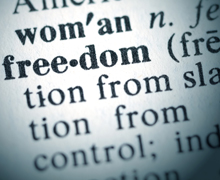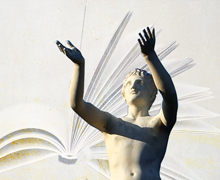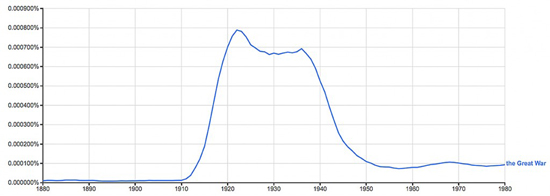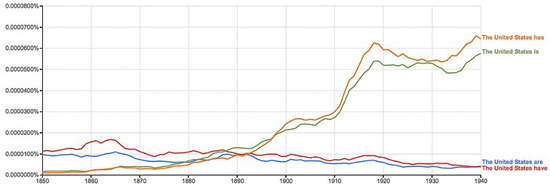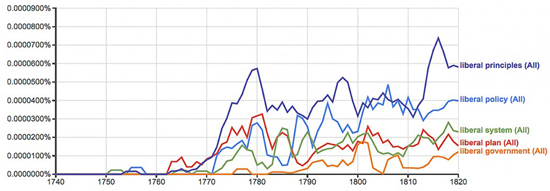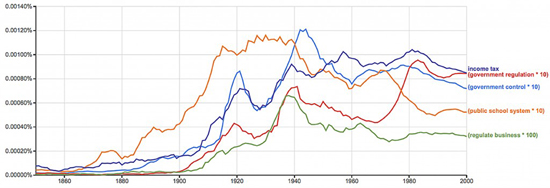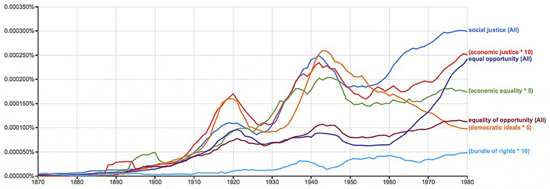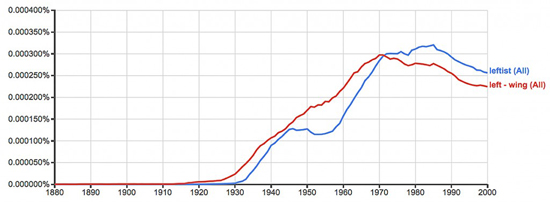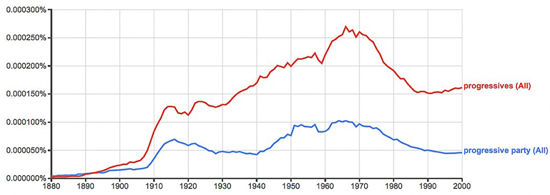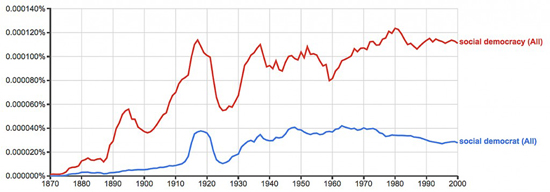By Daniel B. Klein | Here I make a plea, addressed to conservatives and libertarians, regarding the word liberal: please do not describe leftists, progressives, social democrats, or Democrats as “liberal.” I do not ask that you describe yourself as “liberal.” Continue to call yourself “conservative” or “libertarian.” I propose only a single step: don’t call leftists “liberal.” By this single step, we can make great strides.
Words have deep-seated cognates and connotations; they have character and history. Sometimes people fuss about semantics when they shouldn’t. But for words that hit home, important words, semantic practice is a paramount issue. Imagine if people called you “Reek,” as happened to one character in Game of Thrones. Semantic practice can destroy the soul of a person—or a civilization.
When cultures conflict, the issue flows upward, to higher verbal formulations and contests over the meaning of central words such as justice, freedom, and liberty. Cultural conflicts almost always involve semantic disagreement, as when each side invokes “justice.” Yielding indifferently to semantic abuse can be suicidal.
We are situated within a cultural landscape fraught with cultural traps. But we can avoid these traps; or, if we have fallen into one, getting out might be hard but not impossible. We should reexamine our cultural position historically. To do so we must rethink habits in word usage, semantic habits. Around 1770, as will be shown, the semantic landscape was undergoing some nice developments, but later on, around 1890, it deteriorated.
Tracing semantic history has been greatly advanced by Google’s digitization of millions of books and its creation of tools to chart what are called “ngrams.” The “n” stands for “number,” such as three. So an ngram is an n-word-long string of words. An example of a 3-gram is “the Great War.” We can trace the history of “the Great War” by entering that 3-gram at Google’s Ngram Viewer, yielding the chart shown in figure 1. The chart simply plots the percentage of 3-grams (in millions of digitized books) that are the one that you entered.
Figure 1. Ngram of “the Great War”(1)
The Y axis is the percentage of 3-grams that are “the Great War.” We see that when World War II came, people stopped calling World War I “the Great War.”
Figure 2 provides the charts of several 4-grams. Prior to 1880, rarely did someone write “the United States is” or “the United States has.”
Figure 2. Ngrams of term “The United States” construed as singular or plural
We don’t need to examine the many, many bits of text to guess at a story: two decades after the Civil War, people stopped thinking of “the United States” as a plural noun, and more and more thought of the United States as a unified nation-state, something that would take a singular noun. Then, as children were raised up in a culture that talked that way, the notion of the United States as a unified nation-state became the norm; it became a tacit presupposition, part of the air they breathed.
The word liberal has a long history. Its usage and its meanings had existed for centuries. Samuel Johnson’s Dictionary appeared in 1755, and it provided several meanings of liberal at that time. A facsimile reproduction is shown in figure 3.
Figure 3. Prepolitical use: “Liberal” entry from Samuel Johnson’s Dictionary (1755)(2)
The term liberal has always had an abundance of positive connotations: generous, open-minded, tolerant, big-hearted. Centuries ago people who were at liberty had occasion to pursue arts and studies; thus there developed the concepts of the liberal arts, the liberal sciences, and the liberal professions. Liberal has an obvious connection to liberty. And still, when we speak of freeing up restrictions, we speak of “trade liberalization” and liberalization of policy generally. All told, to oppose “liberals” almost seems tantamount to opposing modern, open civilization.
The word liberal began to take on a political meaning around 1770. By virtue of textual digitization, we now can pinpoint the inception with remarkable precision and certainty. In figure 4 we see the introduction of liberal in a political sense, in the expressions liberal policy, liberal system, liberal plan, liberal government, and liberal principles.
Figure 4. Ngrams of terms modified by “liberal” (one-year smoothing)
The inception of liberal as a political term should be credited to the Scottish historian William Robertson, who published a book in 1769 that uses the term repeatedly to mean principles of liberty and commercial freedom.(3) Adam Smith embraced and made important use of the semantic innovation in The Wealth of Nations, published in 1776. Smith used the term repeatedly in a signal way to refer to the sort of policy he advocated, a system that gives a strong presumption to individual liberty, and hence commercial and market freedom.
If all nations, Smith says, were to follow “the liberal system of free exportation and free importation,” then they would be like one great cosmopolitan empire, and famines would be prevented. Then he repeats the phrase: “But very few countries have entirely adopted this liberal system.”(4) Smith’s “liberal system” was not concerned solely with international trade. He used “liberal” to describe the application of the same principles to domestic policy issues. Smith was a great opponent of restrictions in the labor market, favoring freedom of contract, and wished to see labor markets “resting on such liberal principles.”(5)
Elsewhere, Smith draws an important contrast between regulating “the industry and commerce of a great country . . . upon the same model as the departments of a publick office”—that is, to direct the economy as though it were an organization—and “allowing every man to pursue his own interest his own way, upon the liberal plan of equality, liberty and justice.”(6) In drawing such a contrast, Smith again is using the label “liberal” for the latter, which he favors.
Smith and his Scottish colleagues launched a new usage of the term liberal to designate the principles of what he called natural liberty.(7) The principles of Adam Smith spread throughout Europe, as did the name he used for them, “liberal.” Political movements influenced by Smith took the name “liberal,” the earliest examples occurring around 1809 in Sweden and Spain, and so “liberal” political movements were born, leading eventually to the Liberal Party in Britain. Although the ideas of individual liberty and of what came to be called liberalism had germinated for centuries prior to Smith, in works by such figures as John Locke, if we were to identify an era during which time a political vision compatible with Smith’s philosophy was widely designated as “liberal,” we might date it as 1770 to 1880 (or 1890), for, thereafter, word usage began to change.
At the end of the nineteenth century, and thereafter, there came a dramatic shift. Collectivism or statism was on the rise. Why this dramatic transformation occurred is a large and, to my mind, largely unresolved question. Some say, of course, that the change was triggered by the experience of the liberal era itself, that people learned that liberalism doesn’t work well and therefore moved away from it.(8)
Whatever the causes of surging statism, the effects were dramatic and apparent. Social affairs increasingly came to be dominated by governmental forces. I have found it useful to speak of the governmentalization of social affairs, an expression that covers not only government intervention into the voluntary relations of private actors but also the role of government institutions as large actors in society, and hence as large cultural forces. Increasingly government acted not only as coercer and controller of private action but also as provider, instructor, propagator, benefactor, landlord, employer, and funder. Government wields fearsome coercive power to control and restrict, as well as the noncoercive power of tremendous size and hence tremendous influence and dependency. Conservatives and libertarians are wary about government not only because of direct violations of liberty but also because of the cultural consequences of government as a big, central player in social affairs—a new serfdom or feudalism. Moreover, the two kinds of power, coercive and noncoercive, are deployed in conjunction, making offers we cannot refuse or cannot compete with. The expression “governmentalization of social affairs” covers all such facets of big government.
The expansion of governmental institutions since 1900 is well known and can be reflected in ngram figures, as in figure 5, which charts the expressions government control, government regulation, regulate business, public school system, and income tax.
Figure 5. Some ngrams of terms associated with government institutions(9)
But we also see, from around 1890, a sharp rise in words suited to the mentality of the governmentalization of social affairs. Figure 6 collects some of the verbal formulations: equal opportunity, equality of opportunity, economic equality, social justice, economic justice, democratic ideals, bundle of rights. Such terms were almost nonexistent prior to 1880. If you find that astonishing—as I did when I first saw the results—that shows how much our thought is governed by the cultural air breathed during our upbringing.
Figure 6. Ngrams of terms suited to the mentality of the governmentalization of social affairs
The Google resources enable us not only to create ngram figures but also to drill into texts, to see how words were used, and to collect testimony. One thing we can now show is the number of people who remarked on a change in political outlooks, and, in particular, how that change was generational: what happened around 1900 was not so much that people changed their mind but that the young generation took up the new collectivist outlooks.(10) The generational transition was remarked on by both the old liberals and the collectivists. Here is what one Fabian socialist said:
Laissez-faire individualist political philosophy is dead. In vain does poor Mr. Spencer endeavor to stem the torrent. His political ideas are already as antiquated as Noah’s ark. I do not know a single one of the younger men in England who is influenced by them in the slightest degree, though one hears of one occasionally, just as one hears of a freak in a dime museum. (William Clarke, 1894)(11)
Around 1900 there was a great collapse. The new generations were pretty much devoid of Adam Smith liberals, and the collectivists swelled in confidence and numbers.
Especially during the period 1880 to 1940, there came great changes in the meanings of words, changes in semantics. We are still saddled with those changes, and we will remain saddled with them, and with statists seated in those saddles, until we come to realize that we have been dupes of a semantic stratagem.
At a website called Lost Language, Lost Liberalism, Ryan Daza and I provide large compendia of quotations showing how people started using words in new ways, and often even announced and emphasized the newness of their usage and meaning. We do this for ten words of our civilization: liberal(ism), liberty, freedom, justice, property, contract,equality, equity, law, and rights. For each we also provide a compendium of quotations from people, often classical liberals, objecting to the semantic innovation of others. Thus, the website provides not only evidence of semantic innovation but also testimony of such innovation, and from both the exponents and the opponents of the innovations. For the word liberal, the ngrams shown in figure 7 indicate a change and when it started.
Figure 7. Ngrams of new liberalism and old liberalism
Figure 7 clearly shows that from the turn of the century, many people felt the need to distinguish between a new and an old liberalism.(12) Around 1890, people knew what liberalism had been, so when the statists arrogated the term liberal to themselves, they had to explain it as “new liberalism.” The literature of the so-called New Liberals declaimed openly against individual liberty and in favor of state collectivism and socialistic reform. Into the twentieth century, as the ugliness of socialism became apparent, the new so-called liberals moderated their collectivist appetites, but the essence of their political mentality was still the bent toward a greater, if more moderate, accretion in the governmentalization of social affairs.
Today conservatives and libertarians often use the term liberal to refer to leftists, progressives, social democrats, and Democrats. Here I beg you to stop doing so. But if you are not to say “liberal,” what are you to say? One option is to put “liberal” in quotation marks or to say “so-called liberal.” But even better is to use the words that have always signified the mentality of governmentalization: the terms left, progressive, and social democrat.
Prior to the twentieth century, in English-language discourse there was very little talk of “left” and “right,” as shown in figure 8. As the political term left emerged in the twentieth century, it has always signified political and cultural state centralization, through the governmentalization of social affairs. The extreme left is communism. A supposedly more liberal collectivism is socialism. The meaning of the left has changed somewhat, but, despite its verbiage and false consciousness, it still basically remains centered on the governmentalization of social affairs (although we must recognize that on a few issues, the left does lean toward liberalization). The left pretends to favor diversity, but that slogan is in reality just an agenda for people of diverse backgrounds to come together in a broadly uniform set of leftist beliefs.
Figure 8. Ngrams of leftism, left-wing
As for progressive, the essence was aptly described in 1926 by H. L. Mencken: “The Progressive is one who is in favor of more taxes instead of less, more bureaus and jobholders, more paternalism and meddling, more regulation of private affairs and less liberty.”(13) That is, the progressive is one who favors greater governmentalization of social affairs. The description has been largely accurate since the word progressive emerged as a political term. As Jonah Goldberg has shown in his regrettably titled book Liberal Fascism, early American progressivism contained rich veins of racism, eugenics, and all-around statism. In figure 9 we see that the political term progressives emerged around 1910.
Figure 9. Ngrams of progressives, progressive party
Sometimes conservatives and libertarians balk at calling the left “progressive,” not wanting to concede the idea of progress. But I say, let them have it. Not only has progressive always signified statism, but the idea of progress is not suited to true liberalism. The idea of progress is goal-oriented: “Are you making progress on your term paper?” It suggests a goal or destination. But in politics the notion of a social goal or destination is baneful. That collectivists should join together for what they imagine to be progress is perfectly fitting. For them the term progressive is suitable. By contrast, conservatives and libertarians look to, not progress, but improvement.
Another fitting term for leftism is social democracy, which is standard in Europe. Social democracy is a compromise between democratic socialism and a tepid liberalism. The socialistic penchant is foremost, but a vacillating liberalism gnaws at the social democrat’s conscience. In figure 10 we see that the term social democracy emerged around 1900.
Figure 10. Ngrams of social democrat, social democracy
With the onset of the social-democratic age came a confusion of tongues, a Tower of Babel. Over the course of the twentieth century, as the left came to dominate most cultural institutions, its partisans set the semantic rules, and one either played by their rules or found oneself marginalized or excluded. Besides arrogating “liberal” to themselves, they created categories along the lines of “you’re either with us or against us.” There was the left, and then everything else—classical liberals, defenders of tradition, status-quo interest groups, or whatever else—was “the right.” For good measure they would throw in the Nazis, even though they stood for national socialism. With their absurd construction (“the right”), the left, by demonizing any of the groups placed therein—from religious extremists to skinheads to business-interest cronies—would damage and discredit every group within the set of groups denominated as “the right,” most important the true and perennial threat to the leftists’ worldview and selfhood, the classical liberals. How many times have Friedrich Hayek and Milton Friedman, both of whom described themselves as “liberal,” been called “fascist” and “right-wing”?
Too often we have fallen into such traps. Consider another leftist term. Statists had visions of a system that served the interests of all society, and called it socialism. Socialism would save us from the capitalists and the system that serves their interests: capitalism. In the twentieth century, the term capitalism enabled leftists to drop liberalism, as understood in its original political sense, down the memory hole: they seized “liberalism” for themselves and used “capitalism” for what they wanted to fetter, bridle, overcome, and transform. The term capitalism will forever have the connotations that motivated the collectivists to hatch the term in the first place, as the system that serves the capitalists, not society. Liberty-minded people fell into the semantic trap, as many embrace the term capitalism as the name for their own philosophy, thereby confirming and reinforcing their confinement in a semantic cage.
Technological advancement, as represented by Google, has also expanded our communications to other countries. We have become more international. And when we step outside North America, we see that, by and large, liberal still means liberal (in the UK, usage is in-between). Changing communications make it easy for us to read and listen to European Parliament member Daniel Hannan, who often uses liberal proudly in its original sense, and who never calls leftists “liberal,” or to read the journal of the Institute of Economic Affairs (London)—Economic Affairs: A Journal of Liberal Political Economy.
We connect not only with English speakers in the traditional Anglosphere but also with those around the world for whom English is not a native language, thus enhancing the international extension of our discourse. We read news, blogs, and tweets from people in countries who are not traditional English speakers, and they follow our discourse, in English. There, too, liberal by and large still means liberal. In Prague, for example, the leading freedom-oriented organization is called the Liberal Institute.
Where liberal still means liberal, such as in Europe and Latin America, leftists have no reluctance in calling their imaginary bogeyman “neoliberalism.”(14) Just imagine how strange it would be if Rachel Maddow or Paul Krugman railed against something they called “neoliberalism.” Maddow and Krugman want people to remain unaware of the original political meaning of liberal. In the rest of the world, everyone already knows, and the leftists proceed accordingly.
In this new world, we can dwell more easily in the words and thoughts of Daniel Hannan and people in Prague, but also those of great figures of the past, such as Adam Smith and others of the liberal era. New technology allows us to step outside the legacy of the twentieth century. Digitization enables us to see the original inception in Smith’s time of the political meaning of liberal, a meaning that would blossom thereafter, down through the career of William Gladstone, who was four-time prime minister in Britain as leader of the Liberal Party. Digitization extends the circle of understanding backward in time, and, in particular, back before 1880 or so, when in Britain the semantic changes began. Now we can recount the semantic history of the most important words of our civilization.
There are signs of a growing awareness of such semantic issues. For example, at National Review Online, on December 29, 2014, Kevin Williamson published an outstanding essay called “Whose Liberalism?” exploring the semantic history of the term. The piece carries the caption “The curious career of two ideas and one word.” Williamson accentuates the original idea of classical liberalism and affirms the term liberalism. Williamson ends the piece by quoting two leftist authors writing in The Nation, one decrying “unbridled individualism,” the other “unfettered capitalism.” Williamson concludes: “A ‘liberalism’ that is chiefly concerned with the many clever uses of bridles and fetters does not deserve the name. It never has.”
Meanwhile, Kevin Frei and I have created a website called Liberalism Unrelinquished, which presents a statement signed by hundreds of people, including Charles Murray, Alan Charles Kors, Richard Epstein, Jonathan Haidt, Amity Shlaes, Vernon Smith, Deirdre McCloskey, and Alan Macfarlane.(15)
Relinquishing the term liberal to the left is a gift that keeps on giving. I recall, during the months of the Arab Spring, watching Fox News and hearing Sean Hannity express concern that groups like the Muslim Brotherhood were fundamentally opposed to “liberal society.” The concern was right, and his expression was revealing. As Hannity turned to domestic politics, however, he reverted to the semantic traps of the twentieth century. Commentators at Fox News continually insist that the threats to liberal society need to be properly identified. True. But what we defend, what we invite people the world over to embrace, also needs to be properly identified. The best term for it is not democracy, not capitalism, not conservative society, not libertarian society. The best term is liberal society—the term that Hannity himself used. To invite people to embrace liberal society we must first identify liberal society.
Daniel B. Klein is professor of economics and JIN Chair at the Mercatus Center at George Mason University, where he leads a program in Adam Smith’s political economy.
____________________________________
Acknowledgments: For valuable feedback, I thank Niclas Berggren, Jason Briggeman, and Jane S. Shaw.
(1) In the ngram figures, unless indicated otherwise, I use the default three-year smoothing, cite the English corpus (as opposed to the specifically American or British English corpus), and make the case insensitive (thus, in some figures the “All” signifies that capitalized occurrences are also included). In this particular figure, “the Great War” was made case sensitive, thus excluding “the great war” from the numerator of the charted results.
(2) “Page 1195,” A Dictionary of the English Language: A Digital Edition of the 1755 Classic by Samuel Johnson, ed. Brandi Besalke.
(3) William Robertson, The History of the Reign of the Emperor Charles V, 3 vol. (London: Strahan and Cadell, 1769).
(4) Adam Smith, The Wealth of Nations, eds. R. H. Campbell, A.S. Skinner, and W. B. Todd (Oxford: Oxford University Press, 1976), 538, 539.
(5) In several places in The Wealth of Nations, Smith attacks restrictions in labor markets, but the quotation (“resting on such liberal principles”) comes from a 1774 letter by Smith to William Cullen. See The Correspondence of Adam Smith, eds. E. C. Mossner and I. S. Ross (Oxford: Oxford University Press, 1987), 178.
(6) Smith, The Wealth of Nations, 64.
(7) I have summarized this research in “The Origin of ‘Liberalism,’ ” The Atlantic, February 13, 2014. See the videoed lecture embedded there. With collaborators I am in progress on a more substantial piece of research on the matter. Using the resources of Liberty Fund’s Online Library of Liberty, we have searched all texts by authors up through Smith’s time, and, indeed, there is virtually no occurrence of liberal in a political sense prior to 1769.
(8) An influential work contending that statism surged largely as an appropriate response to the failures of the liberal era is Karl Polanyi, The Great Transformation (New York: Farrar & Rhinehart, 1944).
(9) Here, a scalar has been inserted for four of the ngram charts, simply to make them all show nicely on a single scale. What matters is the pattern or shape of the chart, and that is not affected by the scalar.
(10) At the website Lost Language, Lost Liberalism, on a page called “Generations,” Ryan Daza and I present many quotations testifying to the idea of a generational shift.
(11) William Clarke, “The Fabian Society and Its Work,” in Socialism: The Fabian Essays, ed. G. B. Shaw (Boston: Charles E. Brown, 1894), xxi–xxxix.
(12) A twenty-minute video presentation of these materials is available here.
(13) From an article by Mencken in the Baltimore Evening Sun, January 19, 1926; the passage also appears in Mayo DuBasky, The Gist of Mencken: Quotations from America’s Critic (Metuchen, NJ: Scarecrow Press, 1990), 385.
(14) On the history and usage of the term neoliberalism, see Taylor C. Boas and Jordan Gans-Morse, “Neoliberalism: From New Liberal Philosophy to Anti-Liberal Slogan,” Studies in Comparative International Development 44, no. 2 (2009): 137–61; Oliver Marc Hartwich, “Neoliberalism: The Genesis of a Political Swearword,” CIS Occasional Paper 114, Centre for Independent Studies, May 21, 2009; and Dag Einar Thorsen and Amund Lie, “What Is Neoliberalism?,” Department of Political Science, University of Oslo, 2006.
(15) The website enables you to sign, too, if you like. More than four hundred people have signed already.
This essay appears in the Summer 2015 issue of Modern Age. To subscribe, go here.
If you found this blog post of interest, you might want to explore these Free Think University courses:
- Are You a Libertarian?
- Should You Be Politically Correct?
- Was America Established as a Christian Nation?
For this third party post in its full context, please go to:
© 2015. The Intercollegiate Review. www.intercollegiatereview.com


